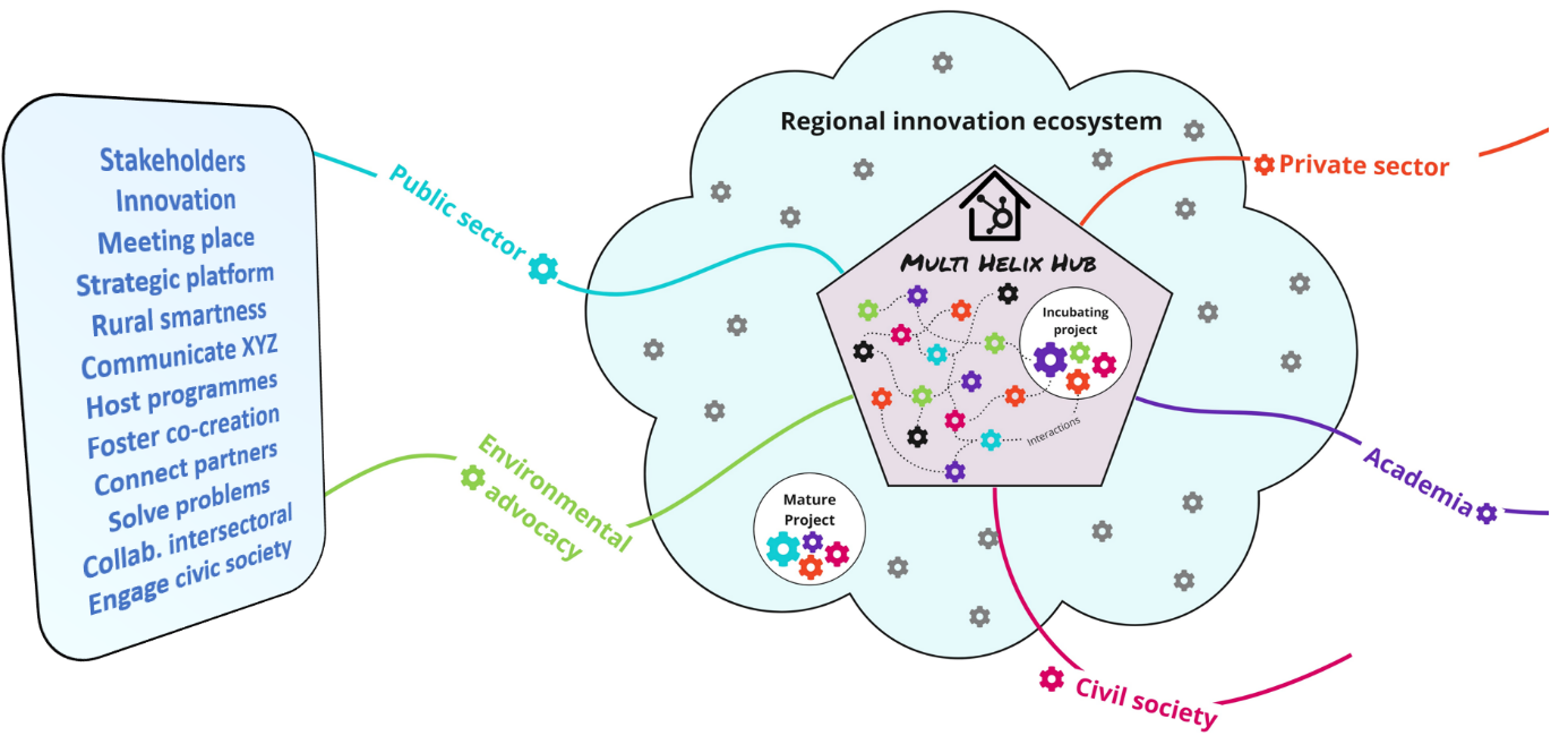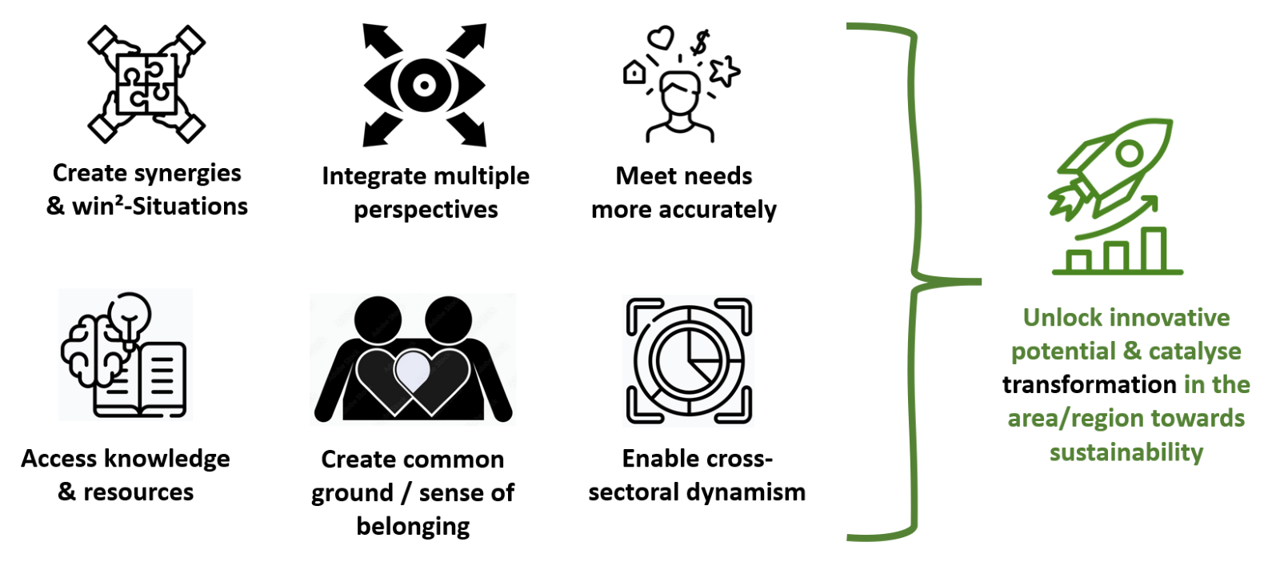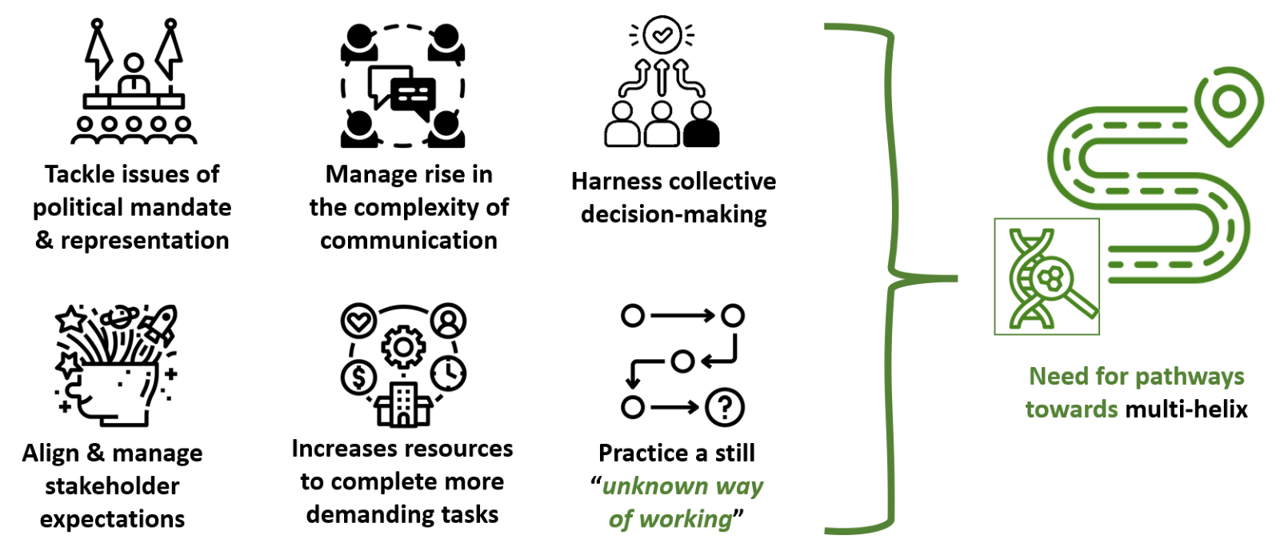Fostering innovations, building resilience and contributing to a transformation towards sustainable futures in rural and coastal areas are not exactly straightforward and simple tasks for anyone.
Fostering innovations, building resilience and contributing to a transformation towards sustainable futures in rural and coastal areas are not exactly straightforward and simple tasks for anyone.
The SIRR project operates with the working assumption that everyone has a stake in this and that coordinating and stimulating as many stakeholders as possible in this fascinating effort will lead to better and more comprehensive solutions and contributions to sustainability. Obviously, easier said than done.
Figure 1 – How do many cooks improve the broth?

Source: Image created with the assistance of Microsoft Copilot
Global challenges such as climate change, economic instability, and social inequality highlight the necessity for platforms that facilitate collaboration among diverse stakeholders. Our readers are perhaps familiar with the saying: “too many cooks spoil the broth”. So, in SIRR we are deliberately looking for answers around “how many cooks are able to improve the broth”. We are focusing on rural and coastal areas where our pilots, the Multi-Helix Hubs in SIRR provide such a platform, enabling different sectors to pool their resources, knowledge, and expertise. This collaborative approach is crucial for addressing complex problems that cannot be solved by any single entity alone. These hubs bring together various stakeholders, including academia, business, civil society, and public administration, to work towards common goals and develop innovative solutions.
Contributing to a participative democracy with tangible results
Many rural areas, and especially peripheral rural areas in Europe with less favourable future perspectives, have been related to the so-called “geographies of discontent” or to the political and academic discussion about “places left behind”, which have led to Brexit or the rise of right-wing populist parties as well as antidemocratic behaviour. Therefore, it is also crucial for the stability of democracies that different territories and regions have access to equal living conditions and fair chances. This is why SIRR’s impact challenge and slogan is “All onboard in rural societies for a fair future”.
Especially in rural and coastal societies with development challenges it is important that all stakeholders, let them be individual citizens, organisations or institutions, have the opportunity to shape their own environment and future. Everyone is passionate about something or is concerned about specific problems in the community, hence it is SIRR’s goal to find approaches on how to systematically channel that collective energy, navigate potential discrepancies and convert it into practical and innovative solutions and approaches that improve quality of life, now and in the future. But, how to exactly do that … that is a big question!
Putting multi-stakeholder collaborations into practice
Our so-called Multi-Helix pilot hubs (MHH), also known as pilots, are per se a diverse set of organisations in somewhat geographically and societally different settings. SIRR features municipalities, educational institutions, associations and member-driven organisations among its hubs. But as already said, they can all be considered local strategic platforms designed to strengthen the regional innovation capacity and promote sustainable development. They serve as centres of activity where various stakeholders can connect, collaborate, and exchange knowledge. In this context, MHH are pivotal points of innovation and collaboration that link local actors with the broader regional innovation ecosystem.
The concept of a “multiple helix” approach to local and regional development is originally rooted in the helix innovation theory appearing around the turn of the millennium. Instead of conceptualising a fixed configuration of three helixes, like university-industry-government, in SIRR we consider that the hubs manage multiple configurations of sectors and stakeholders, depending on the issue or challenge to be tackled. Also, the impetus and creativity of civil society and the preservation and regeneration of natural resources and the environment need to play a stronger role in the development of smart and sustainable solutions at the local and regional level.
Figure 2 - Depicting a multi-helix hub and its demanding tasks

Source: SIRR’s own elaboration
As figure 2 above clearly shows, coordinating stakeholders and managing a MMH is a demanding exercise that requires skilled personnel and a constant reflective and strategic approach. Understanding and translating the logics of the intervening sectors or constantly monitoring and prompting key actors as well as instigating collaborations isn´t something which can be done as an occasional side job. It needs to be done in a highly professional manner.
Main advantages and disadvantages of an emerging multiple helix approach in the SIRR pilot hubs
During 2023, the VISTRA-Institute acting the coordinating knowledge partner in SIRR, performed a first comprehensive survey of the hub’s managements in order to develop a first comparison of the very different framework conditions and characteristics of the participating hubs. The following advantages and disadvantages of an emerging multiple helix approach in the SIRR hubs came up during the survey:
Why is a multi-helix approach important?
Multi-Helix Hubs (MHH) are crucial for fostering innovation and sustainable development in rural areas by bringing together diverse stakeholders from academia, business, civil society, and public administration. This collaborative approach enables the pooling of resources, knowledge, and expertise, which is essential for addressing complex and multifaceted challenges that no single entity can tackle alone. The importance of MHH lies in their ability to create synergies, integrate multiple perspectives, and foster a sense of belonging among stakeholders, thereby driving local and regional development and resilience.
Figure 3 - Why is a multi-helix approach important?

Source: SIRR’s own elaboration
What barriers & risks of a multi-helix approach are perceived?
However, the implementation of MHH is not without its barriers and risks. Key challenges include navigating political mandates and representation issues, managing diverse stakeholder expectations, and handling the increased complexity of communication and collective decision-making processes. Additionally, there is a need for clear pathways to facilitate multi-helix collaboration, as well as mechanisms to harness collective decision-making effectively. Addressing these barriers is essential to unlock the full potential of MHH and ensure their success in driving sustainable transformation in rural areas.
Figure 4 - What barriers & risks of a multi-helix approach are perceived?

Source: SIRR’s own elaboration
Need for pathways towards a multiple helix approach
If the initial question at the beginning of this article is to be answered with a YES – the future of rural innovation does in fact lie in multi-Helix hubs – then, SIRR will need to map out the way to go. And although commonalities among hubs are evident, each of them is in its own way and context quite unique.
That is why a main goal of the action research performed in SIRR is to help the hubs with their own reflective and learning processes. The comparative scientific methodology should allow to develop recommendations on how to structure, manage and strategically orientate these platforms for local and regional development, serving as a pathway towards an effective multiple helix approach.
Next steps on the scientific roadmap in SIRR are the individual and common evaluation of a second survey of the hubs, this time allowing to integrate and outside perspective by surveying the perceptions of stakeholders about the hub and its multiple helix configuration.
So, look forward to a further update on the topic towards the end of 2024.
